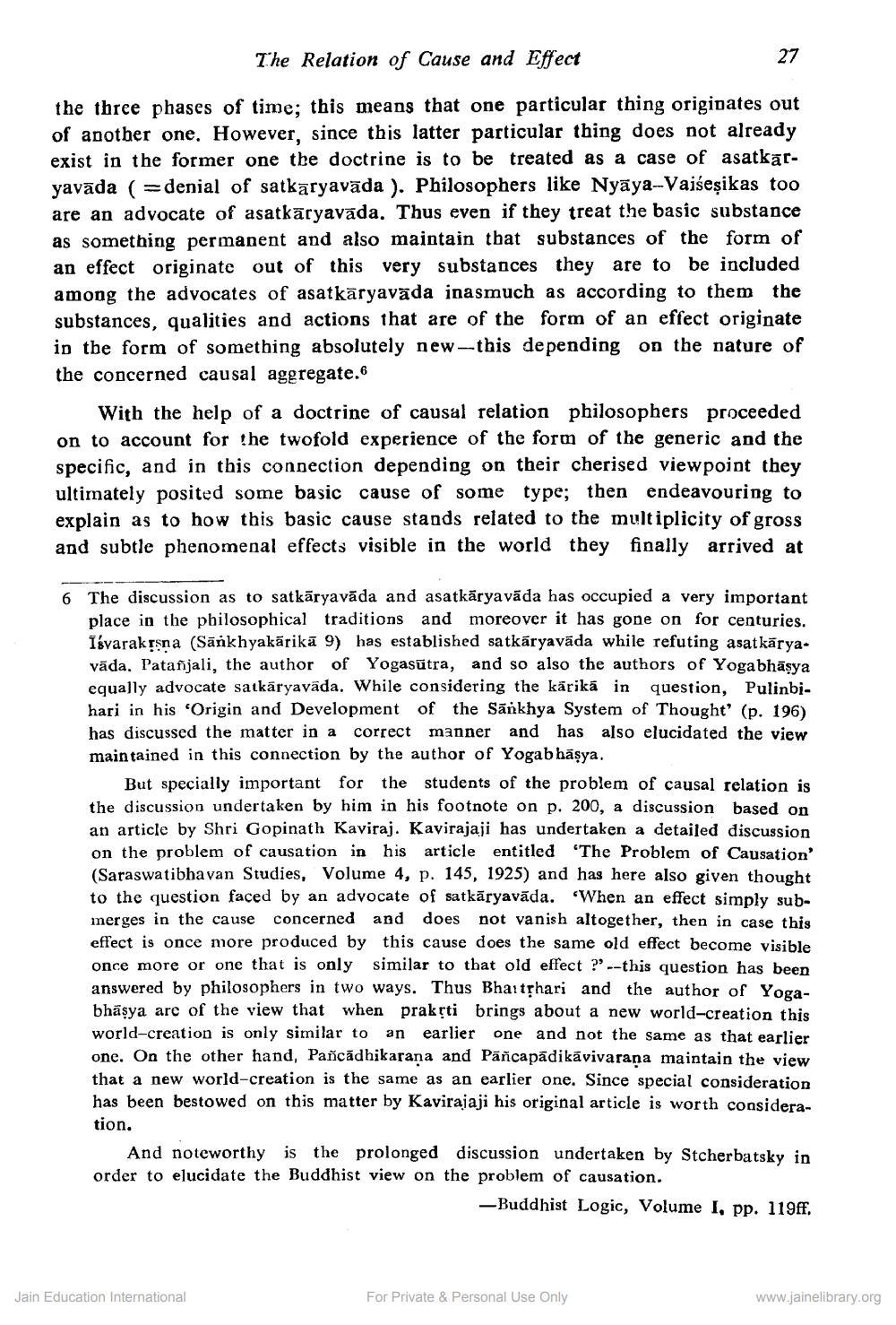________________
The Relation of Cause and Effect
27
the three phases of time; this means that one particular thing originates out of another one. However, since this latter particular thing does not already exist in the former one the doctrine is to be treated as a case of asatkāryavāda (=denial of satkāryavāda ). Philosophers like Nyāya--Vaiseșikas too are an advocate of asatkāryavāda. Thus even if they treat the basic substance as something permanent and also maintain that substances of the form of an effect originate out of this very substances they are to be included among the advocates of asatkāryavāda inasmuch as according to them the substances, qualities and actions that are of the form of an effect originate in the form of something absolutely new-this depending on the nature of the concerned causal aggregate.6
With the help of a doctrine of causal relation philosophers proceeded on to account for the twofold experience of the form of the generic and the specific, and in this connection depending on their cherised viewpoint they ultimately posited some basic cause of some type; then endeavouring to explain as to how this basic cause stands related to the multiplicity of gross and subtle phenomenal effects visible in the world they finally arrived at
6
The discussion as to satkāryavāda and asatkāryavāda has occupied a very important place in the philosophical traditions and moreover it has gone on for centuries. Isvarakrsna (Sānkhyakārikā 9) has established satkāryavāda while refuting asatkāryaväda. Patañjali, the author of Yogasutra, and so also the authors of Yogabhäsya equally advocate satkaryavada. While considering the kärika in question, Pulinbihari in his 'Origin and Development of the Sankhya System of Thought' (p. 196) has discussed the matter in a correct manner and has also elucidated the view maintained in this connection by the author of Yogab hāșya.
But specially important for the students of the problem of causal relation is the discussion undertaken by him in his footnote on p. 200, a discussion based on an article by Shri Gopinath Kaviraj. Kavirajaji has undertaken a detailed discussion on the problem of causation in his article entitled "The Problem of Causation' (Saraswatibhavan Studies, Volume 4, p. 145, 1925) and has here also given thought to the question faced by an advocate of satkāryavāda. "When an effect simply submerges in the cause concerned and does not vanish altogether, then in case this effect is once more produced by this cause does the same old effect become visible once more or one that is only similar to that old effect ?'--this question has been answered by philosophers in two ways. Thus Bhaitphari and the author of Yogabhāsya are of the view that when prakti brings about a new world-creation this world-creation is only similar to an earlier one and not the same as that earlier one. On the other hand, Pañcădhikarana and Pāñcapădikāvivarana maintain the view that a new world-creation is the same as an earlier one. Since special consideration has been bestowed on this matter by Kavirajaji his original article is worth consideration.
And noteworthy is the prolonged discussion undertaken by Stcherbatsky in order to elucidate the Buddhist view on the problem of causation.
-Buddhist Logic, Volume I, pp. 119ff.
Jain Education International
For Private & Personal Use Only
www.jainelibrary.org




